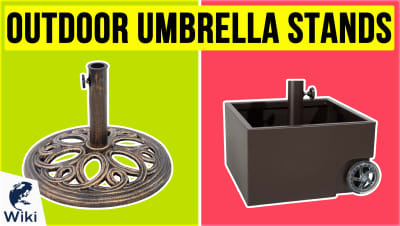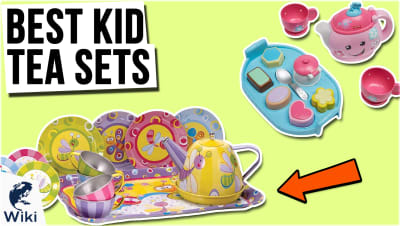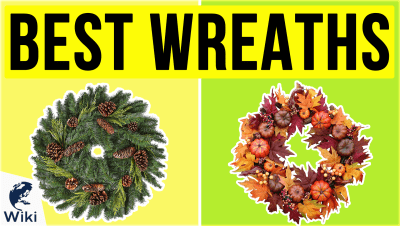When to Use An Apostrophe
Using proper grammar can make all the difference, whether you need to impress a potential employer or just want to look smart on the Internet. And putting an apostrophe where it doesn't belong, or forgetting one where you need it, can make it seem like you don't have a good grasp on the English language. In this guide, we look at how the apostrophe functions and when you should use it. This video was made with Ezvid Wikimaker.
When Should I Use An Apostrophe?
| Use | Explanation | Example |
|---|---|---|
| Contractions | To mark the place where certain letters are omitted | Can't; Don't |
| Possessive Nouns | To show that something belongs to someone | Mary's little lamb |
| Plural Letters | To make individual letters plural | Mind your p's and q's |
| Certain Names | To properly spell several Irish surnames | O'Neill; O'Malley |
How Do Apostrophes Work for Possessive Nouns?
When the noun is singular, the rule is almost always to simply add an apostrophe followed by the letter 's' to the end of the word. For example: the eagle's feathers. This applies to both common and proper nouns. But it gets a little tricky when a singular noun ends with the letter 's.' Experts disagree about what to do in this instance. Generally, you should follow the same rule, and add and apostrophe and an 's' to the end of the word. For example: Travis's party. But if the term would be difficult to pronounce, some style guides say you should just add an apostrophe. For example, you could write Socrates' collected works and avoid the awkward-sounding Socrates's. With plural possessive nouns, the rule is simpler. Just add an apostrophe to the end of the word. For example: The dumplings' flavors were superb. For plural possessive nouns that don't end in 's', revert back to the original rule. For example: the children's toys.
When Should I Avoid Apostrophes?
- When making a word plural
- When using its as a possessive pronoun
- In the words yours, theirs, ours, his, and hers
Does Grammar Matter?
Conclusion
Apostrophes are mainly used to note possession or to create contractions. However, there are some tricky exceptions to these seemingly simple rules. But if you take the time to learn, you can easily develop a sense of when you should and shouldn't use an apostrophe. This can help you avoid embarrassing grammatical mistakes and make your writing better.
In Depth
Recognized as one of the most widely used punctuation marks in the English language, the apostrophe is easily visible in advertisements, banners, street signs, and other public displays. However, despite the punctuation being commonly used, mistakes in its application are still noticeable.
The apostrophe has two uses. First, it shows possession, which means that something is owned by someone. Second, it emphasizes the omission of certain letters or numbers. To further demonstrate these points, there are multiple rules to be followed that point out when and where the apostrophe should be used.
For possessive common nouns that own other nouns, apostrophes can be used to point out the ownership. If the noun does not end with 's,' add apostrophe plus 's.' Check the following examples. The bike's handlebars were wrapped in red tape. The girl's brother took a ride in the subway.
Check the following examples.
With a singular noun that ends in the letter 's,' add apostrophe plus 's' as shown in the next examples. The class's performance last week was excellent. My boss's schedule is always hectic during these peak seasons.
However, with a plural noun that ends with the letter 's,' add only the apostrophe. For example, the dogs' paws were covered in mud. The dumplings' flavors were superb. With a plural noun that does not end with 's,' add apostrophe plus 's.' The children's Christmas vacation will be planned earlier. Her teeth's growth improved after having regular check-ups with the dentist.
If there are multiple nouns and they all own another noun, an apostrophe or an apostrophe plus 's' can be placed on the last noun mentioned. Check the following example: Their grandmother and grandfather's new house recently underwent renovation.
Check the following example: Their grandmother and grandfather's new house recently underwent renovation.
If there are multiple nouns but each possess another noun individually , an apostrophe should be placed after every noun. In the following sentence, there are two individual programs, each being possessed by a different group of people. The students' and the parents' retreat programs were conducted a day after the other.
If a compound noun possesses another noun, the apostrophe can be added to the last word or element, as shown in the next examples. My mother-in-law's passion for art is contagious. The president-elect's platform focuses on new policy changes.
For an indefinite pronoun, add apostrophe plus 's.' Check the following examples. Someone's wallet was found outside of the classroom. Is anybody's card compatible with the machine?
For an indefinite pronoun, add apostrophe plus 's.'
When it comes to proper nouns, it is recommended that rules similar to those of common nouns should be applied when using the apostrophe. If the name does not end in 's,' an apostrophe plus 's' should be added. For example, Charlie's hair was brown and straight. The Daily Mail's stories on celebrities are entertaining.
If the name ends in 's' and its pronunciation sounds acceptable, an apostrophe plus 's' can be added. For example, Mr. Burns's clean handwriting is easy to understand. The children ate all of Mrs. Simmons's baked cupcakes.
However, there are certain deviations to this rule. An example of a common exception is the use of only an apostrophe with other proper nouns that end in 's,' such as Jesus and Moses, as well as Greek names that have more `than one syllable and end in 's,' such as Prometheus. For example, we spent Lucas' birthday at the beach with his friends.
An example of a common exception is the use of only an apostrophe with other proper nouns that end in 's,' such as Jesus and Moses, as well as Greek names that have more 'than one syllable and end in 's,' such as Prometheus.
Next, contractions are short versions of certain words or phrases, often applicable to casual writing or speech. Avoid using contractions when writing formal and professional pieces. It is important to remember that an apostrophe indicates the place where certain letters are omitted. Check the following examples. Don't forget to clean your mess. "Don't" is a contraction of "do not"; the "o" in "not" was omitted. I'm interested in joining the swimming team. "I'm" is a contraction of "I am"; the "a" in "am" was omitted.
Common apostrophe mistakes are easily noticeable when the apostrophe is added where it is not needed. Do not use an apostrophe when using possessive pronouns that end in 's.' Do not use an apostrophe as a result of confusion over words that have the same sound but have different meanings. With an apostrophe, "it's" is a contraction of "it is." Take that punctuation away, and "its" becomes a possessive pronoun. For example: The cat played with its yarn. It's time to leave for school.
The contraction "you're" is a short version of "you are," whereas its homophone "your" is a possessive pronoun. You're one of the best singers around. Did you forget to bring your umbrella?
Did you forget to bring your umbrella?
The contraction "who's" is a short version of "who is." Do not confuse this with the possessive pronoun "whose." Who's going to attend the dinner meeting tonight? Whose idea is it to have a picnic next week?
If you are in the process of studying the English language and applying it in writing and speech, make sure your punctuation marks, including the apostrophe, are always properly placed.
















